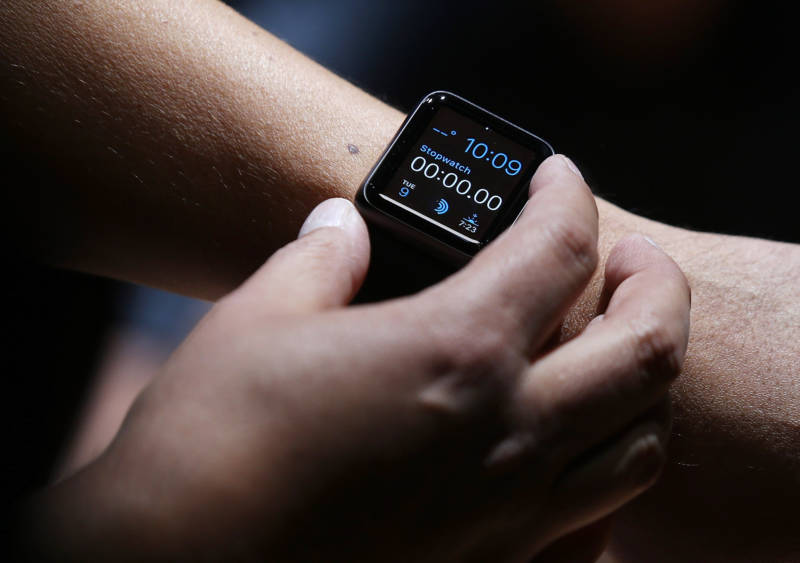What is atrial fibrillation?
A-fib occurs when the heart's top chambers, called the atria, get out of sync with the bottom chambers' pumping action. Sometimes patients feel a flutter or a racing heart but many times they're not aware of an episode.
Sometimes the heart gets back into rhythm on its own. Other patients get an electric shock to get back into rhythm, or are prescribed blood thinners to counter the stroke-causing blood clots that untreated a-fib can spur. A-fib causes 130,000 deaths and 750,000 hospitalizations a year in the U.S.
How do doctors check for it?
A-fib is most common in older adults, and other risks include high blood pressure or a family history of arrhythmia. But routine screening isn't recommended for people without symptoms.
Studies haven't yet proved that early detection from screening would prevent enough strokes to outweigh risks from unnecessary testing or overtreatment.
How does the Apple Watch check for it?
A mobile app uses the optical sensor on certain versions of the watch to analyze pulse rate data. If it detects enough variation from beat to beat over a 48-hour period, the user receives a warning of an irregular heart rhythm.
The latest version of the Apple Watch also allows wearers to push a button to take an EKG and share the reading with doctors. Saturday's study didn't include watches with that capability.
Does the new study show mass screening is a good idea?
No. The study was designed to tell how the watch compared to a week of standard EKG monitoring — not if the wearer's health improved because the screening uncovered the arrhythmia.
To prove if detecting a-fib early lowers risk of stroke would require years of study.
And since the study didn't have a comparison group getting routine EKGs, there's no way to know if the watch missed heartbeat problems, giving a false sense of security, Kovacs said.
The puzzling low numbers of alarms might be because most participants were young or middle-aged, not the seniors who are most at risk for a-fib, he said.

